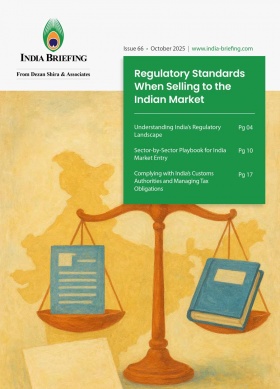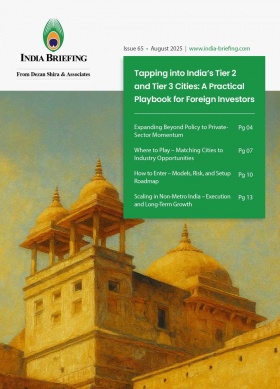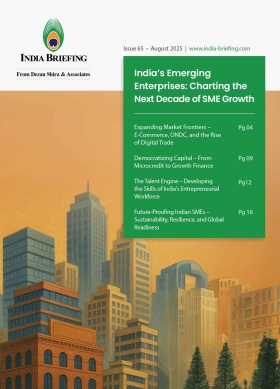India Expands Export Controls with New SCOMET Category 7 for Emerging Technologies
India strengthens export-control rules with the addition of Category 7 to the SCOMET list, impacting semiconductor, quantum, and cryogenic technologies. Learn how exporters can meet the new regulatory obligations.
India has expanded its export-control framework by adding Category 7 to the Special Chemicals, Organisms, Materials, Equipment, and Technologies, or the SCOMET list, bringing advanced semiconductors, quantum technologies, cryogenic systems, and related software and know-how under a formal licensing regime.
The new rules took effect on October 23, 2025, requiring exporters to evaluate product classifications, strengthen internal compliance, and revise contractual arrangements to ensure alignment with India’s export-control obligations.
India updates the SCOMET list periodically to reflect new technologies and to maintain consistency with global export-control agreements.
Understanding the SCOMET framework
The SCOMET list regulates dual-use products, items that can serve commercial purposes but also carry potential military or strategic applications. Any export of such goods, software, or technology generally requires authorization from the Directorate General of Foreign Trade (DGFT).
The list currently contains eight categories, and Category 7 now broadens its reach into high-technology domains that were previously not covered.
|
India’s SCOMET List as of September 23, 2025 |
|
|
Product category |
Description |
|
Category 0 |
Nuclear materials, nuclear-related other materials, equipment and technology
|
|
Category 1 |
Toxic chemical agents and other chemicals
|
|
Category 2 |
Micro-organisms, toxins
|
|
Category 3 |
Materials, materials processing equipment and related technologies
|
|
Category 4 |
Nuclear-related other equipment and technology, not controlled under Category 0
|
|
Category 5 |
Aerospace systems and equipment, including production and test equipment, related technology, and specially designed components and accessories, therefore.
|
|
Category 6 |
Munitions list |
|
Category 7 |
Certain emerging technologies and related items
|
|
Category 8 |
Special materials and related equipment, material processing, electronics, computers, telecommunications, information security, sensors and lasers, navigation and avionics, marine, aerospace and propulsion |
Source: Updated SCOMET List 2025, DGFT
Please note that prior to the latest amendments to SCOMET’s list, category 7 remained under reserved status.
*Reserved status is temporary and intended to facilitate the future inclusion of items not yet detailed in the list.
Scope of the revised Category 7
The DGFT’s 23 September 2025 notification introduces export controls over a set of emerging technologies with increasing strategic relevance. Category 7 specifically addresses:
- Advanced semiconductor devices and integrated circuits
- Quantum components and quantum-based systems
- Cryogenic and cryo-electronic technologies
- Semiconductor fabrication, testing, and diagnostic equipment
- Related software, technical data, and know-how
Similar to other SCOMET categories, Category 7 is organized into sub-sections (7A to 7E), covering equipment, materials, software, and technology.
Global context and policy alignment
India’s move reflects a broader global trend to regulate sensitive emerging technologies:
- European Union (EU): The EU revised its dual-use list in 2025 to widen controls over quantum computing infrastructure, semiconductor-related equipment, and associated software and technology.
- United States (US): Since 2023, the US has implemented a series of export-control measures on advanced computing, semiconductor manufacturing tools, high-end memory chips, and certain artificial intelligence (AI)-related technologies, using detailed performance thresholds and targeted end-use restrictions.
- United Kingdom (UK) and Switzerland: Both countries have also increased oversight on exports relating to quantum computing, semiconductor technologies, additive manufacturing equipment, etc.
India’s Category 7 aligns its regulatory posture with these international developments.
Effective date and compliance roadmap
India’s SCOMET Category 7 has been in force since October 23, 2025, making prompt compliance a priority for exporters. Companies must ensure the following measures:
- Conduct a classification review to determine whether current or planned exports fall within Category 7.
- Update internal compliance systems, including screening procedures and documentation flows, to support timely license applications.
- Review and modify contracts to manage export-control risks. This may include:
- Clauses confirming non-applicable end-uses
- Exclusions for restricted or sensitive applications
- Contractual provisions recognising delays caused by licensing processes
These proactive measures will help avoid disruptions to cross-border shipments and ensure business continuity.
- Previous Article Forensic Accounting in India: Fraud Prevention and Risk Management for Businesses
- Next Article








